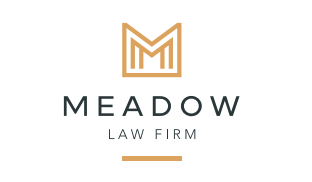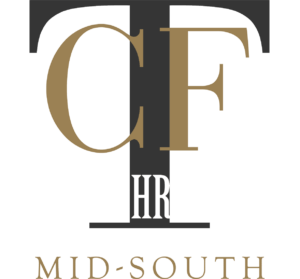Jon Robinson:
Hi everyone. Thank you for joining CaseWorks. CaseWorks helps law firms improve profitability with a trusted outsource resource that facilitates cost effective operational scale, while converting overhead into expensable case costs. We are continuing our series talking to thought leaders in the legal space, today being joined by Susan Barfield, CEO of CaseWorks, and Chris Princis, VP of sales at Consumer Attorney Marketing Group. Thank you both for joining us today.
Susan Barfield:
Thank you, Jon.
Chris Princis:
Thanks Jon.
Jon Robinson:
Consumer Attorney Marketing Group CAMG, well-known in the legal field. The leading marketing agency for mass tort and single event plaintiff firms. Really great to have you here, Chris joining us. Can you tell us a little bit about your role at CAMG?
Chris Princis:
Yeah, Jon, thanks, vice president, and pretty much oversee a lot of the relationships that we have with our clients, making sure we’re getting them information they need, if they need to get to new cases for current clients, making sure we’re optimizing what’s already in play. And I think what we’re talking about today, specifically in the mass torts side, helping clients throughout the lifecycle of the mass tour, wherever they’re at, to get these cases. Whether it’s there’s a new one on the horizon that folks want to get into, if there’s existing ones that firms want to add to their population. And then as things wrap up, making sure while the time is still available to get as many cases as a firm they may want to add to their inventory.
Jon Robinson:
And mass tort cases, they have a very long lifecycle. We see some torts take many, many years to go from this emerging phase, all the way through to the point where they’re settled. And there are many different things that happen throughout the course of that lifecycle. We’re going to talk specifically about three moments within the lifecycle of a mass tort, when it may make sense for a firm to consider entering that tort and acquiring cases. Susan, have you seen firms starting to acquire more cases here in middle of 2021?
Susan Barfield:
Yeah. Great question. I have, especially just after COVID a lot of the personal injury attorneys that want to invest in mass tort, their cases started resolving. And so I’ve seen an uptake in the investment in mass torts. And then as you just mentioned, there’s several new torts on the horizon. And we’ll talk about that, just, there’s there’s firms that want to get in early. And so we’ve seen an uptick on those cases.
Jon Robinson:
It has felt like over the past month, there’s just been this emergence of new cases. Chris, you want to touch on some of the ones that you’re seeing pop up recently as getting some attention?
Chris Princis:
Yeah. At least from my radar, there’s been two that are, I guess on the entry level of the investment cycle. Philips CPAP, the sleep apnea machines. And there was just [inaudible 00:03:07] a perfect webinar on those recently. And then the Neutrogena sunscreen is coming on pretty strong. So those are two in the last number of weeks that have really gotten on everyone’s radar.
Jon Robinson:
And why do you think firms find mass torts so appealing versus single event?
Chris Princis:
Yeah, I think they can both be appealing. I think it depends on what the firm’s looking at, but as far as mass torts go, there’s a couple of things. Obviously there’s a larger pool of folks that immediately need help, need guidance, which obviously leads to some financial rewards there for everybody involved. And if you’re not in leadership, a mass tort is also something, if you’re a law firm where you can pretty much just almost invest in the cases and not have to be involved. You can sit on the sidelines and make it almost … And I hate to tie it anything to Wall Street in this world, but it’s like a passive investment, where you can do some research, you can invest your money, and then you can watch how the litigation’s going. And then hopefully when there’s a positive outcome for everyone, participate in the rewards.
Jon Robinson:
Yeah, absolutely. Definitely a good compliment for firms that are in single event, considering getting into mass torts. Are there any benefits to entering a mass tort at that emerging phase like we’re at right now with CPAP and with sunscreen?
Chris Princis:
Yeah, there’s a couple. And again, I’m going to tie it to the investment world, because most folks can understand that. But early on, and we’re usually engaged with the majority of firms, that when they get a hunch or there’s some intel where there’s something maybe brewing, you can get into these for two reasons. Number one, if you’re a law firm and you’re looking to maybe make a move to be on leadership and you need a number of cases, a lot of inventory, that’s a great way to get involved early. And like anything else, there’s the risk reward factor. So early on where there’s still a lot of unknowns, that’s the risk, but the reward is, there’s not a lot of competition for cases yet, so you can certainly get a good inventory, get a good population early on at an attractive price point.
Jon Robinson:
What about as a tort becomes a little bit more mature, the science gets a little bit more defined, firms have a better understanding of what the population looks like and many people were affected? What about at that point in the lifecycle?
Chris Princis:
Yeah, it’s still attractive. It comes to the risk reward factor. So Jon, exactly what you’re saying is, we move through a litigation and criteria becomes a little bit more defined, injuries, become a little bit more defined, there’s less risk involved. Certainly prices are going to go up because of the competition. There’s obviously less cases potentially out in the market. So for a higher price point, you’re going to also get a lot less risk.
Jon Robinson:
Susan, there are firms that come to you at various points in this mass tort lifecycle. Where are you seeing most firms come to you with an opportunity and saying, “Hey, I’ve got cases.” Is it right when these torts are starting? Is it after they become a little bit more mature, or is it once they become ready for settlement?
Susan Barfield:
Yeah, I would say if I think back to all the firms that we’re supporting, it’s really just based on their comfort level. Like Chris said, it depends on the risk that they … Some firms want to get in early on, just like he said, that the cost per case acquisition is a lot lower. The firms that we are supporting, a lot of them jump into a tort as soon as one emerges. Just like Chris mentioned, the cost per case acquisition’s low. And so that allows them to build their inventory, and as the science continues to evolve, they start to dwindle, or they might close out or reject some of those cases based on what they’re seeing.
Susan Barfield:
And then we have other firms that are really conservative, and they’re wanting to wait until that science has been more defined as far as what are the injuries, and then they’re going to start … I think of it like a funnel, there’s firms that a traditional funnel, they want to go get a lot of cases in the very beginning, whereas there’s other firms that think about like an inverted funnel, they start to really narrow in their criteria, and they’re really looking for very specific cases with a very narrow criteria.
Chris Princis:
Just to add to that, something else down the funnel that’s actualized is, you see the leadership that’s going to be a part of the mass tort. There’s a saying in the mass tort world where you certainly want to look at betting on the jockey, not necessarily the horse. So that the leadership team that’s overseeing a mass tort is defined. So you can then make your investment decisions based on who’s going to be overseeing the results of the settlement.
Jon Robinson:
Early on a firm is looking to invest in both the marketing so they can acquire cases, as well as they’re looking at the investment in their firm, and what is it going to take for them to operationalize getting into a new case type, or scaling and bringing on a lot of cases. Susan, can you talk about how firms who are at that phase in their decision-making process could leverage Case Works to enter a tort?
Susan Barfield:
Yeah. I think one thing Case Works, we come in and talk with firms and try to understand what their strategy is, because for us, we don’t want to be viewed as a vendor. We really want to be viewed as another business partner. So we want to look at what is their strategy and what are they trying to achieve? And so some of the things that we’re going to talk to these firms about, number one is, who are they using for case acquisition? Because that is really going to be telling to us, we’ve worked with pretty much every case acquisition group that’s out there. And so we have a lot of stats and metrics on each group and the cases that got across the finish line. So we want to work with firms that are going to be bringing in qualified clients.
Susan Barfield:
And then the second thing that we want to talk about is, who are they using from the medical record retrieval. As we all know, no records, there’s no case. And so we want to make sure that we’re helping the firms make decisions on who are the best partners for them, so that we can get as many cases across the finish line. And so for Case Works, whether it’s small firms, personal injury attorneys that have never invested in mass tort, then we can utilize and leverage our case ready process to help them. And so it’s a complete formula for them. Like Chris said earlier, and they can pretty much be hands off. It’s a complete outsource solution. We’ll work with the different groups, so we’ll work with CAMG, and we’ll work with [cars 00:10:52] on ordering those medical records, and then we’ll work up those cases.
Susan Barfield:
For firms that are pretty established, and they’ve been in the business and been doing mass tort for a long time, as torts emerge, as Chris mentioned earlier, and they want to go invest into those new torts, they might not have the infrastructure in place to be able to handle the volume that they otherwise could bring in. And so that’s a great place to be able to leverage a group like Case Works to be able to outsource the entire process. And then I guess even further from that, we really like to understand, their cashflow, if there’s concerns about that, then we can connect them with different funders where they can essentially acquire more cases. Then our process, the case development, the medical record ordering, all of that can be passed along as a client expense. And so those are the conversations that we like to have with firms, not just, “Hey, this is Case Works, this is what we do, and let’s talk about case development.” But, “Let’s look at your strategy holistically, and let’s talk about the best partners to be able to outsource this entire process for you.”
Jon Robinson:
Because if a firm is actually looking to get into mass torts, and they’re going to be working with someone maybe who’s on leadership, they’re referring the cases over to them, really, they can use a marketing partner like CAMG and a case development partner like Case Works, and strategically invest their money in the case types that they want, and make sure that they’re getting quality cases from CAMG, and that their clients are being taken care of. And the cases are being worked up as well as possible with the Case Work. So the fact that we … Going back to the question, scaling their operation really is just a choice of hiring the best vendors to get the cases and to work up the cases. And they can get into mass torts probably much quicker than they would otherwise be able to?
Susan Barfield:
Yeah. And I’ve heard from firms that they spend a lot of money on marketing and acquire cases. And then from that point, they then referred them out to the firms on leadership, but they really didn’t get the feedback that they were looking for on, okay, where are those cases? How are they being developed? Where are they in the case development’s pipeline? And so alternatively, what we suggest is working them up, and getting them to a point where you understand your inventory, and then refer them. Not only is that you understand your inventory, but a lot of times you can negotiate a better attorney fee split. So you’re paying a very modest amount for the case development in the medical records. Number one, it can be passed along as a client expense. You understand the inventory. And then when you refer that over, then you can negotiate the attorney’s fees. So overall it’s just a great strategy.
Jon Robinson:
So we’re really talking about three times in the lifecycle of a mass tort, where someone could look at investing. Case Works can support the firm anywhere throughout that process. CAMG can support from marketing perspective, anywhere throughout that lifecycle. But Chris, in your opinion, at what point in a tort’s lifecycle, either the emerging phase, the scaling phase or the pre-settlement phase, would you believe to be the strongest point, or the most efficient time to invest in mass torts?
Chris Princis:
Yeah. It’s hard to say, and everyone’s got their own … Like any investment, everyone’s got their own end goal, their risk tolerance, and what they’re looking to to get out of it. I would say, regardless of when you invest, keep a close eye on the market and what’s emerging. And then follow it along, stay engaged and call folks like Susan, or us, or whoever your resources are to stay engaged with it, and see where you’re comfortable with. If you’re a seasoned investor, you know where your benchmarks are and what you’re looking to do. And we run across this all the time. We’ve got seasoned clients, and we’ve got clients that have been doing auto for the last 30, 40 years. And they’re like, “We want to throw our hat into the mass tort side of investing.” And so we hold their hand a little bit closer.
Chris Princis:
I think seasoned, they can usually make their call. And a lot of those firms will invest in all three areas, all three buckets of it, beginning, middle, and then end tier. A suggestion depending … I get it, it’s all up to the firm. But if you’re new to it, typically what I see is they want some comfort. So a middle tier mass tort, where maybe there’s a few answers, there’s some of the risks mitigated, especially if you are at first trying this. And they’re happier to maybe spend a little bit more as a price point per case. But again, I wouldn’t go into advise any one particular strategy. I’d want to learn what the firm’s looking to do, and then give some feedback on the best chart forward.
Jon Robinson:
Yeah, absolutely. I think every firm is going to be unique. They need to look at their own situation, get into the right tort at the right time for that firm.
Chris Princis:
That’s right.
Jon Robinson:
All right. Well, I want to thank you, Chris, for joining us today as a guest. Susan, thank you as always. Chris, if someone wants to get ahold of you, or of CAMG, how can they reach you?
Chris Princis:
Yeah, we’re pretty accessible on the website, camginc.com. And then obviously anyone can call me if they like at 312-361-7003. Happy to help where I can.
Jon Robinson:
Susan, any last comments on Case Works?
Susan Barfield:
No. And I just wanted to add, Chris, certainly appreciate you joining today. And then if anyone wanted to learn a little bit more about Case Works, they can visit our website at yourcaseworks.com. Certainly always reach out to me via email. You can contact me at susan@yourcase.works.
Jon Robinson:
Thanks everyone for joining us. Don’t forget to subscribe if you’re watching us on YouTube. Follow us on LinkedIn, and we will see you for our next episode. Thank you.
Susan Barfield:
Thank you.




